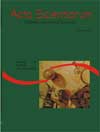<b>Education in Antonil's conception: some reflections on his work “<em>Cultura e Opulência do Brasil</em>” (culture and opulence in Brazil)</b> - DOI: 10.4025/actascihumansoc.v25i1.2201
Abstract
The aim of this paper is to discuss the Jesuit priest Abdré João Antonil’s work, entitled Cultura e Opulência do Brasil (Culture and Opulence in Brazil). Our purpose was to reflect upon the relation between labor and education, present in his work. Antonil’s text, written in 1711, explains what contents are useful and necessary for the man who reproduces the labor, according to accumulation patterns, in Brazil Colony times. The labor, done especially in the sugar mills and organized under the guidelines of discipline, objectivity, rationality, showed which contents should be learned by persons who would be responsible for the control of wealth in Brazilian land. We understand that this text is precious enough to reveal that education contents are not isolated from human relations in labor because we realize that these relations impose what education should be like in different historical timesDownloads
Download data is not yet available.
Published
2008-04-15
How to Cite
Chaves, M., & Faustino, R. C. (2008). <b>Education in Antonil’s conception: some reflections on his work “<em>Cultura e Opulência do Brasil</em>” (culture and opulence in Brazil)</b> - DOI: 10.4025/actascihumansoc.v25i1.2201. Acta Scientiarum. Human and Social Sciences, 25(1), 95-103. https://doi.org/10.4025/actascihumansoc.v25i1.2201
Issue
Section
Education
DECLARATION OF ORIGINALITY AND COPYRIGHTS
I Declare that current article is original and has not been submitted for publication, in part or in whole, to any other national or international journal.
The copyrights belong exclusively to the authors. Published content is licensed under Creative Commons Attribution 4.0 (CC BY 4.0) guidelines, which allows sharing (copy and distribution of the material in any medium or format) and adaptation (remix, transform, and build upon the material) for any purpose, even commercially, under the terms of attribution.
Read this link for further information on how to use CC BY 4.0 properly.























